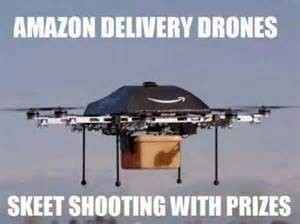Drones have gained a reputation for hunting terrorists and spying on both foreigners and Americans alike. So it’s easy to overlook the fact that these hovering, loitering aircraft have quite a following in the hobbyist world as well. To the people who build and fly them recreationally, modern unmanned aerial vehicles (the terms drone and UAV are pretty much interchangeable) are just a technological advancement of the radio-controlled planes and helicopters that amateurs have been flying for years. The Federal Aviation Administration is still struggling to work out the rules for operating UAVs commercially, but for private use, the agency’s regulations are remarkably lenient (“Drone Skies,” September)—no license is required, and so long as you keep your drone below 400 feet and don’t do anything dangerous over densely populated areas, you’re free to fly around as you please.
The ABCs of UAVs
Like many hobbyist toys, drones have a sliding scale of sophistication and cost. The more you spend, the more a drone can do, and the more a drone can do, the harder it is to learn to fly reliably. Drones come in two flavors: fixed-wing aircraft that operate like airplanes, and multi-copters that take off vertically and can hover like helicopters. You can build a drone yourself with kit parts from online merchants such as Hobby King, 3D Robotics, DJI, or Team Black Sheep, or you can do as I did, and pay a little extra to have one of these manufacturers build it for you. There are also several open-source movements designing flight-control and autonomous-flight software for UAVs, including Open Pilot, APM: Copter, and APM:Plane—although not all software works on all hardware.
Large RC planes and helicopters are typically powered by combustion engines and can be difficult and (as the death of an RC hobbiest in Brooklyn, N.Y., this August demonstrates) sometimes dangerous to fly. But a new breed of small and accessible aircraft uses digitally controlled electric motors and high-discharge, rechargeable, lithium-polymer batteries. These are not your average cellphone batteries. Li-Po batteries are powerful and highly volatile, have specialized connectors, must be charged carefully, and have a vocabulary all their own (see “Anatomy of a Battery”). Most importantly, many hobbyist drone aircraft don’t come with a battery—which can throw your weekend plans in the ice bath when you excitedly open the box of your first drone, only to find you’ve got another online order to place before the fun times begin.
